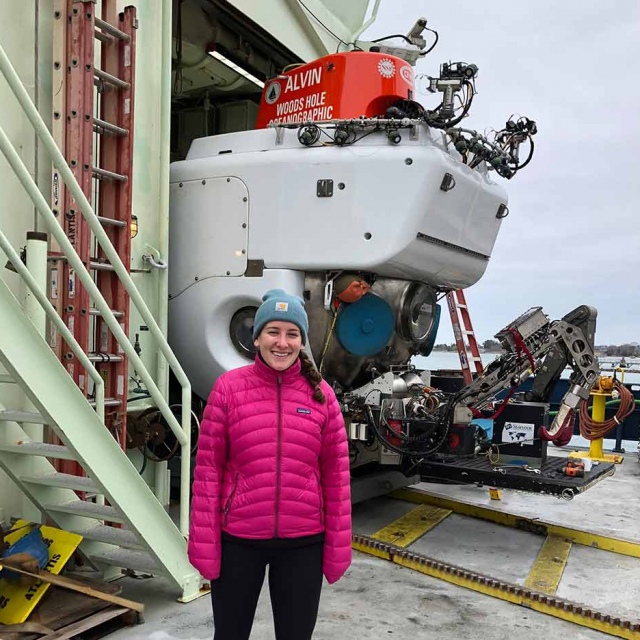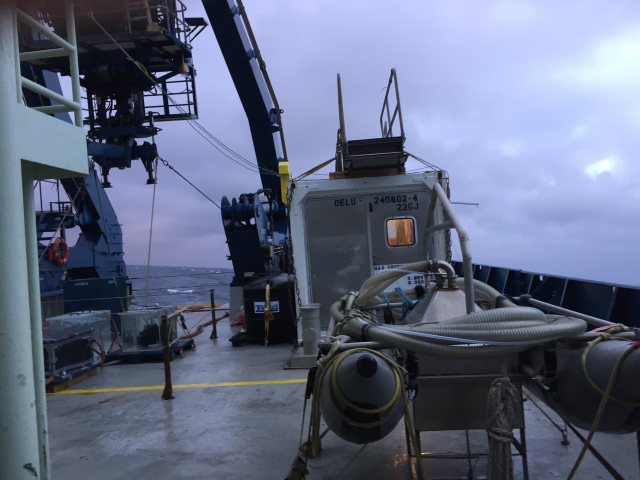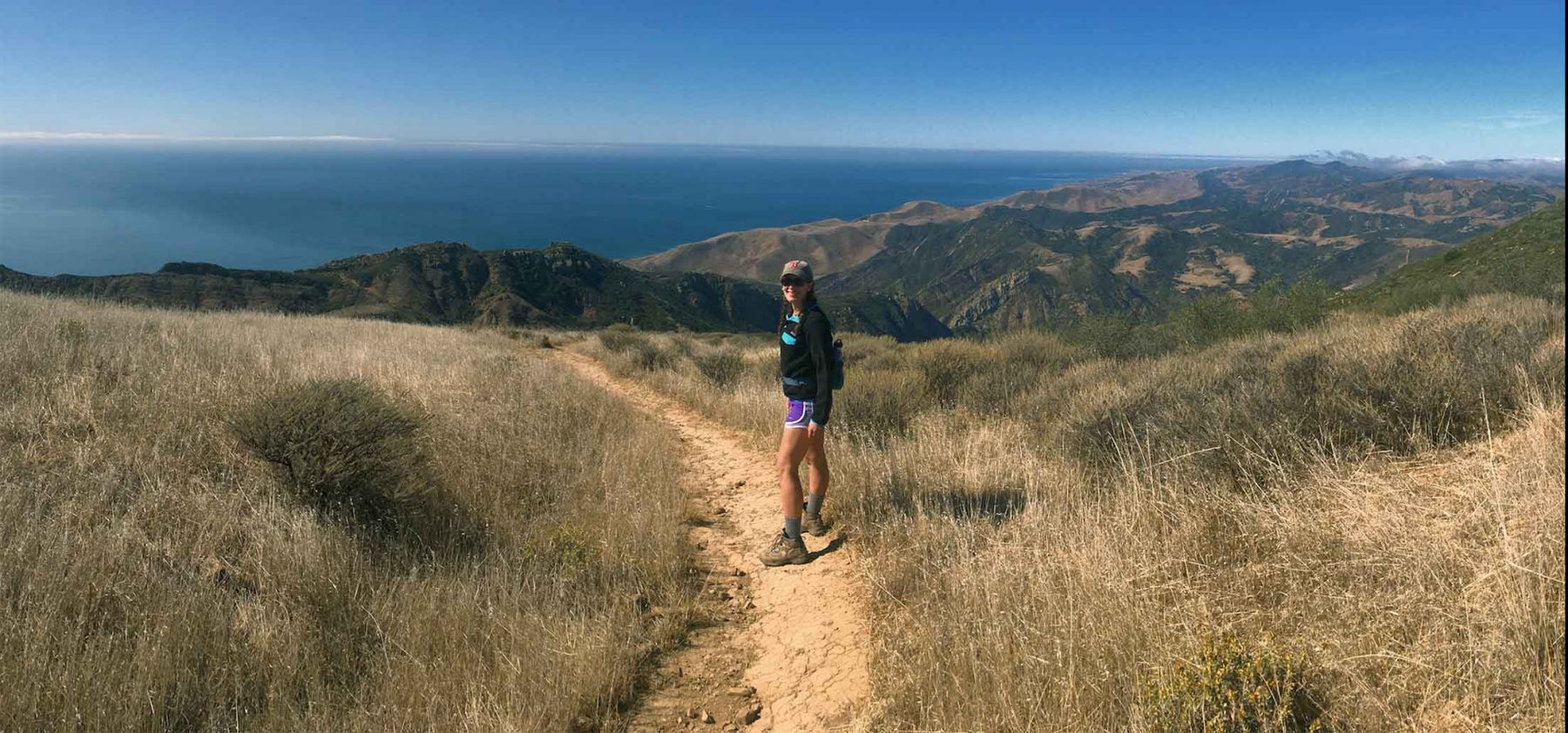
About Sasha
Sasha Kramer is a PhD student in the IGPMS program. She is from Concord, Massachusetts and received her B.A. in earth and oceanographic science and environmental studies from Bowdoin College in Maine.
Why UCSB
I love the campus’ proximity to the ocean. It is impossible to lose sight of the significance of my research while working on a PhD in marine science at UCSB. If I need inspiration in the middle of the day, it is just a quick walk to a beautiful view of the Pacific Ocean and Channel Islands. While I can't see the microscopic phytoplankton I study floating in the waves as I look down at the ocean during a walk on the bluffs, I know that they are omnipresent and contributing to the productive, whale-and-dolphin-filled channel that surrounds UCSB.
About IGPMS
IGPMS has a very close knit group of students. We work during the day as scientific colleagues--most recently as part of the Across the Channel: Investigating Diel Dynamics [ACIDD] cruise in December 2017, led by graduate student Chief Scientists Kelsey Bisson and Nick Huynh. We also spend time together outside of our research--going hiking, having beach bonfires, going on camping trips, and making good food. Our program brings together researchers and students with incredibly diverse interests and talents. As a result, the classwork, research, and seminars we have access to as graduate students are inherently interdisciplinary, which helps to foster an environment encouraging creativity and collaboration between labs.
I love spending time at sea on research vessels as part of my work. From December 2017 to September 2018, I spent 70 days at sea as part of 3 field campaigns: Across the Channel Investigating Diel Dynamics (ACIDD), North Atlantic Aerosols and Marine Ecosystems Study (NAAMES), and Export Processes in the Ocean from RemoTe Sensing (EXPORTS).
Sasha Kramer, Graduate Student
Interdepartmental Graduate Program in Marine Science
UC Santa Barbara

Research
I study phytoplankton, microscopic photosynthesizers that are ubiquitous in the sunlit global ocean, from tiny scales (microscope images of individual phytoplankton cells) to large scales (satellite images of the surface of the ocean). Similar to the wide variety of plants we see on land, there are many different kinds of phytoplankton in the ocean. We care about the composition of phytoplankton species in the surface ocean because different types of phytoplankton contribute differently to the global carbon cycle. Some phytoplankton take up a lot of carbon dioxide from the atmosphere then sink to the bottom of the ocean, where they become part of the ocean sediments. Other phytoplankton take up relatively less carbon dioxide and have small cells that are recycled in the surface ocean where their carbon is used by bacteria and other organisms. My research includes work on the computer to process data and field work on research vessels, where I take physical water samples and look at the concentration and composition of phytoplankton cells in different parts of the ocean.
How and Why Did You Get Into Your Area of Research
As a kid, I grew up going to the beach with my family and always loved playing in the waves and investigating the creatures I found on the sand. As an undergraduate at Bowdoin College, I realized I could turn that passion into a career by majoring in earth and oceanographic science. During my time at Bowdoin, I worked with Dr. Collin Roesler on a summer project investigating nutrient utilization by phytoplankton in a Maine estuary. As part of this project, I learned a number of techniques that I still use in my research today for characterizing the phytoplankton community using optical proxies. The next year, I was a summer student fellow at Woods Hole Oceanographic Institution where I worked with Dr. Heidi Sosik on a project to identify phytoplankton communities from satellite measurements. These two projects sparked my interest in phytoplankton ecology and convinced me of the power of optical oceanography as a research tool. Now, as a PhD student with Dr. Dave Siegel at UCSB, I not only get to continue working on questions of phytoplankton ecology on global scales, but I also get to work with Collin and Heidi as part of the Export Processes in the Ocean from RemoTe Sensing (EXPORTS) project through NASA!
What Do You Find Rewarding About Your Research
I find my research incredibly rewarding because not only is it fun, but I also get to contribute to our understanding of ocean systems during a time of unprecedented global change. I am studying how specific proportions of phytoplankton, dissolved and particulate components of the ocean, and ocean water come together like a puzzle to absorb and scatter light, making the water appear to be different colors. Characterizing the phytoplankton community from space using satellites will allow us to visualize large portions of the surface ocean and to describe the role of these phytoplankton species in the carbon cycle. I also find it rewarding to share the importance of phytoplankton to the global system with others. I am always looking for more fun ways to share my interest in and passion for oceanography. My sister (a PhD student at MIT in Biology) and I started an Instagram account (@siftingsisters) where we often feature scientific-themed cupcakes to help spread understanding about our research through delicious baked goods.
